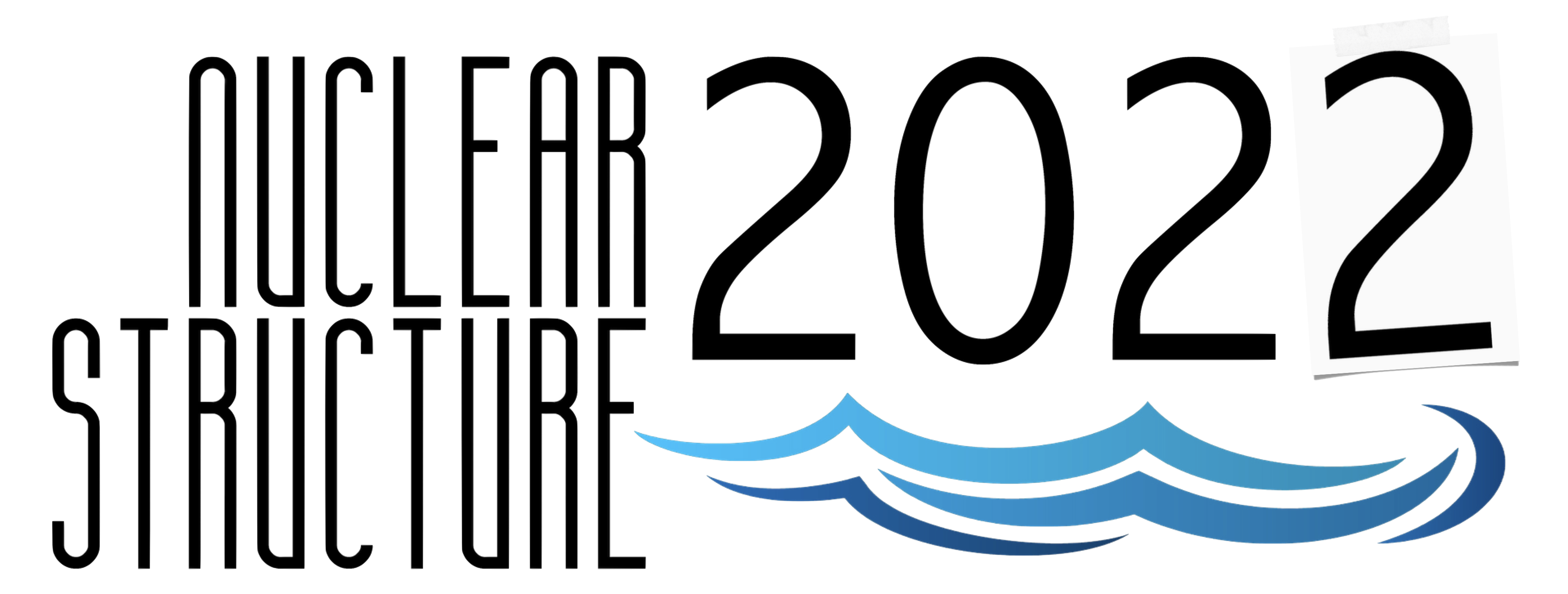Speaker
Description
The stable to neutron-rich isotopes of germanium are a critical testing ground for nuclear models due to their complex and rapidly changing nuclear structure. The even-A 72–78Ge isotopes exhibit triaxial deformation, and the presence shape coexistence has also been suggested in 72Ge [1]. A transition from prolate to oblate shapes occurs at 70Ge [2], and another region of triaxiality has been
proposed around the neutron-rich 84,86,88Ge isotopes based on their low-lying level schemes [3]. With two neutrons removed from the singly-magic 82Ge, the rare-isotope 80Ge is important for a systematic understanding of the structural evolution of neutron-rich nuclei in this region of the nuclear chart.
A barrier-energy projectile Coulomb excitation experiment studying 80Ge was performed at the ReA3 facility of the NSCL using the JANUS [4] setup. This technique is sensitive to direct indicators of nuclear shape and deformation, namely E2 transition strengths and quadrupole moments. Electromagnetic matrix elements were extracted from the experimental data via a joint use of the
GOSIA and GOSIA2 codes [5]. Most notably, the quadrupole moment of 80Ge was measured for the first time, and the precision of the B(E2) transition strength was improved. The experimental results indicate a large, prolate deformation for 80Ge.
Two sets of large-scale shell-model calculations, with different effective interactions, were performed for 70–82Ge in order to better understand the current experimental results as well as the structural evolution in this region. The calculations reproduce both the current result for the 80Ge transition strength as well as the trend observed in the heavy Ge isotopes. The quadrupole moments proved more challenging for theory, though both sets of shell-model calculations performed point to a larger prolate deformation in 80Ge compared to its neighboring isotopes. The present measurement is consistent with this picture.
This work was supported by the U.S. Department of Energy, Office of Science, Office of Nuclear Physics, under Grant No. DE-SC0020451, the U.S. National Science Foundation (NSF) under Grant No. PHY-1565546, and the DOE National Nuclear Security Administration through the Nuclear Science and Security Consortium, under Award No. DE-NA0003180. B.A.B. acknowledges support
from NSF Grant No. PHY-1811855. Work at LLNL was performed under Contract No. DEAC5207NA27344. Work at the University of Surrey was supported under UKRI Future Leaders Fellowship Grant No. MR/T022264/1.
[1] A. D. Ayangeakaa et al., Phys, Lett. B 754, 254 (2016).
[2] R. Lecomte et al., Phys. Rev. C 22, 1530 (1980).
[3] M. Lettmann et al., Phys. Rev. C 96, 011301 (2017).
[4] E. Lunderberg, et al., Nucl. Instrum. and Meth. in Phys. Res. A 885, 30 (2018).
[5] T. Czosnyka et al., Bull. Am. Phys. Soc. 28, 745 (1983).

